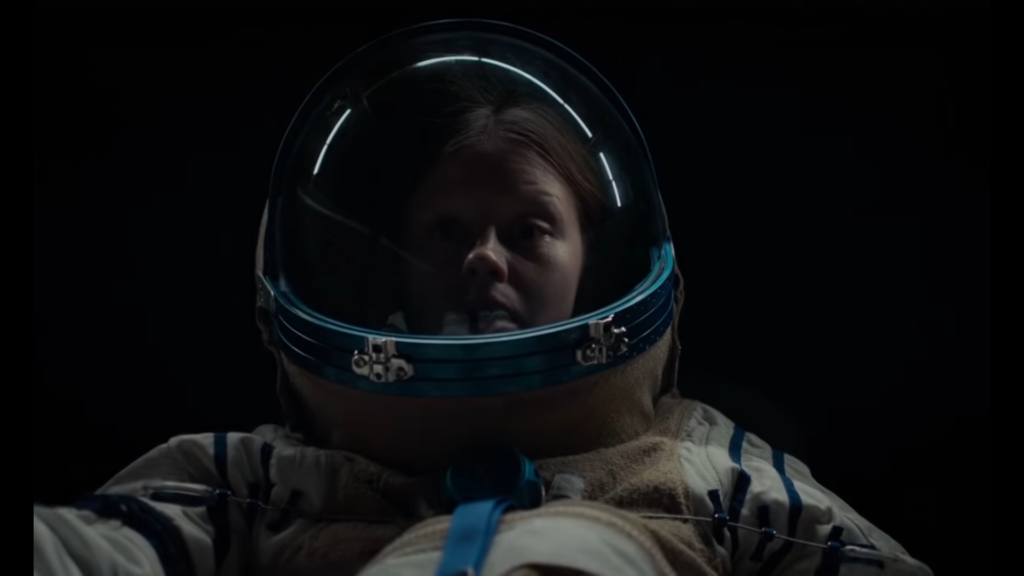The festive season is here. Christmas is all around. Let’s not forget that there are many different ways of celebrating Christmas (Santa Claus is only one of them). A possible tradition, for example, is to watch the British 2003 movie called ´Love Actually´.
And so to celebrate this season here we have a review of the movie, a review that reveals what the movie ACTUALLY (pun intended) is about.

The movie may seem like a normal random romantic comedy, but it actually is not. It tells nine different stories, independent between them (although some characters are related between them). And here comes the interesting aspect of the movie: each story shows different types of love. So, far from being a traditional rom-com, the movie says this: love can appear in may different ways, and not only in the traditional normative structure that usually appears in objects from, let’s say, Disney. So the movie wants to break with traditional preconceived ideas of love and instead wants to show what love actually is.
Let’s go one by one, because in some stories it is very clear what love is. But in others it is actually tricky, very tricky.
1. and 2. Let’s start with the easiest. Stories that tell a plain, simple love tale. These are the stories between the Prime Minister of England and his head of catering, and between a broken-hearted writer and his new assistant. They are like a Disney classical love story, like we mentioned before: a man meets a woman, they gain attraction, there is an obsacle that drives them apart, and they finally overcome the obstacle and get together.
Interestingly, there is a reason why there are two of this stories: they are the same but also the opposite. One is a man that has everything, the Prime Minister, but even then finds himself in a vulnerable position where he might lose the chance to be with the girl (as exemplified in a quite bad sequence with the President of the United States, where is seems like him and the Prime Minister of England duel over the girl, using the “interests of the country” as a metaphor). In the other story it’s the opposite: a man that has lost his previous partner and has no one, has almost nothing, and is fulfilled by the newcomer assistant.
3. and 4. These two stories, again, are opposites of each other. After the first ones, they are the ones that resemble classical romance the most.
The first is a couple of actors for adult videos. As such, they have to pose and touch each other while being naked, simulating sexual scenes. They are people who find themselves immersed in all the physical intimacy and, while already being there, they develop love for each other. So, love comes alone, because they were not looking for the physical intimacy (they were already there) but exclusively for the romance.
The second is a young English guy that goes to the United States looking for sexual partners, after failing to find one in the UK. Unlike the other story, here the young man searches for physical intimacy. By the end he has a girlfriend with whom he had sexual encounters among other girls at the same time. His love is then completely accompanied by physicial intimacy and sexual acts, they go hand in hand together.
5. Here is where it starts to get interesting. This is the story of a singer that appears in numerous times throughout the movie, a jokester old singer aiming to be the number one. It’s love story is not clear as he brags about all the random girls he can go with. In the end, the character himself reveals that his love story is, actually, with his manager. It is not a romantic nor sexual relationship, but it is love nonetheless, immense love from the singer with the person that has accompanied him in so many occasions.
6. Similarly, the story between a kid asking his stepfather to help him seduce a classmate is not a traditional romantic love story. It may be easy to think that it is a cute story between that kid and the girl he likes at school. However, it is actually about the love between the kid and the stepdad, a man whose wife recently died but whose bond with his step-son grows in the most affectionate way throughout the movie.
7. Again, the movie here tricks the audience into thinking that this story is between an office worker and a colleague. They focus on how she has been in love with him for so long, and they manage to kiss and go home together until she gets called to help her sick brother. The story between the two does not go further, because this is actually not about the love story between the two coworkers. The movie is actually telling the story of love between the woman and her brother, about how she will be there for him no matter what. The love is not with the colleague, in that case, is with the brother, with the family, family with whom she spends the Christmas with. And even her realises that this is the important thing for Christmas.
8. This story is perhaps the most bittersweet one. The movie starts showing a story of a man and a woman getting married, a story where love is already there, accomplished and stable. However, the wife asks the husband’s best friend for a video of the wedding, and here is when the movie reveals that the friend had been recording the wife all the time. The story is, actually, about the love from that friend to the wife, a story where the man only ends up telling her his feelings and acknowledging his acceptance. It is a story about love, but an unaccomplished or “unsuccesful” love, one where, unlike the Disney classical romances, things are more complicated. It should be noted, this portayal is not one of “healthy” love, though, since the man makes it clear that, instead of moving on and accepting that there is no “one and only”, he states he will unavoidable always love the wife.
9. This last one is tricky. It is the story of a boss, his wife, and his secretary. This secretary attempts to seduce him, to the point that she asks him to buy him a Christmas present. It is unclear whether the man and the secretary engage in any physical intimacy, but he does give her a golden necklace. Meanwhile, the wife thought the necklace was for her, only to discover that she got a CD with a singer “to help her with her emotional education” (the irony). Again, it is not a story of happy ending: the wife is heartbroken, naturally. But, where is the love here? Well, this story is the most mature one. It is a story of a spent love, a love that was once alive and dancing but that has gradually faded into monotony and rutine, to the point where it makes the husband follow the seduction of his secretary. The movie tells us, though, that there is love anyway: the man recognises his terrible mistake and they treat this love for what it is: something that time can make vulnerable, and that needs to be taken care of, at all time.
Lastly, it is important to state that the movie does a good job at portraying what love actually is and the different forms it can take. However, there is a matter of representation: how many couples are there that are non-heterosexual, for instance (romance stories, excluding the one with the singer, of course). Something to take into account.
Overall, though, it is a very good movie, one that is a joy to watch during these festive seasons and one that is filled with this nice Christmas spirit all around.
























